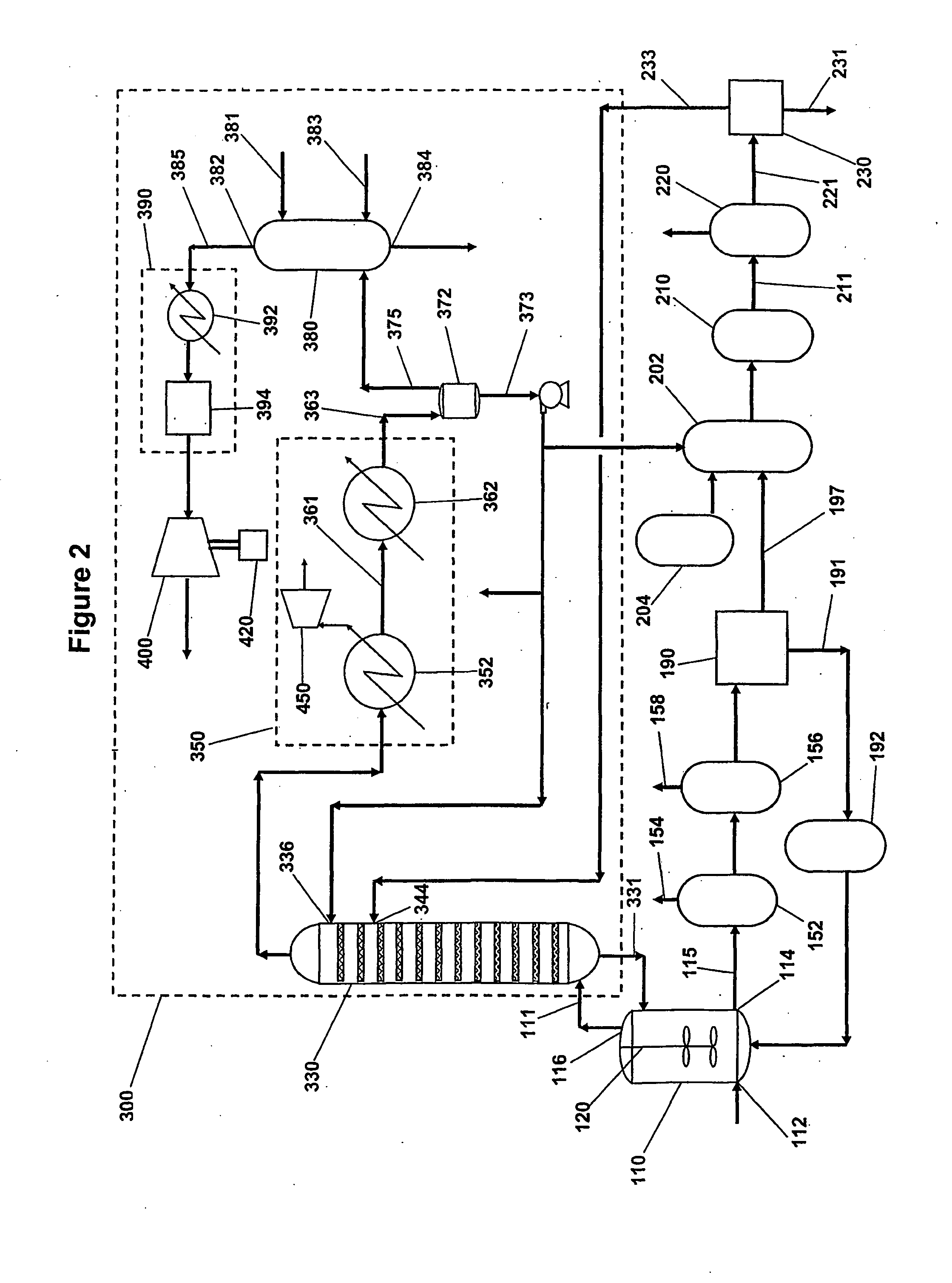Process and Apparatus for Manufacturing Pure Forms of Aromatic Carboxylic Acids
a technology of aromatic carboxylic acid and process equipment, which is applied in the direction of carboxylic compound preparation, sustainable manufacturing/processing, and separation processes. it can solve the problems of reducing the recovery capacity of crude aromatic carboxylic acid products from oxidation reaction liquids, adversely affecting the use of monocarboxylic acids, and affecting the use of hydrogenation catalysts. it reduces the corrosivity of process gas streams, improves the recovery capacity of energy, and avoids material loss
- Summary
- Abstract
- Description
- Claims
- Application Information
AI Technical Summary
Benefits of technology
Problems solved by technology
Method used
Image
Examples
Embodiment Construction
[0027]Aromatic carboxylic acids for which the invention is suited include mono- and polycarboxylated species having one or more aromatic rings and which can be manufactured by reaction of gaseous and liquid reactants in a liquid phase system. Examples of such aromatic carboxylic acids include terephthalic acid, trimesic acid, trimellitic acid, phthalic acid, isophthalic acid, benzoic acid and naphthalene dicarboxylic acids. The invention is particularly suited for manufacture of pure forms of terephthalic acid including purified terephthalic acid and so-called medium purity terephthalic acids.
[0028]An oxidation step of the invented process is a liquid phase oxidation that comprises contacting oxygen gas and a feed material comprising an aromatic hydrocarbon having substituents oxidizable to carboxylic acid groups in a liquid phase reaction mixture comprising a monocarboxylic acid solvent and water in the presence of a catalyst composition comprising at least one heavy metal componen...
PUM
| Property | Measurement | Unit |
|---|---|---|
| separation | aaaaa | aaaaa |
| wt. % | aaaaa | aaaaa |
| impurities | aaaaa | aaaaa |
Abstract
Description
Claims
Application Information
 Login to View More
Login to View More - R&D
- Intellectual Property
- Life Sciences
- Materials
- Tech Scout
- Unparalleled Data Quality
- Higher Quality Content
- 60% Fewer Hallucinations
Browse by: Latest US Patents, China's latest patents, Technical Efficacy Thesaurus, Application Domain, Technology Topic, Popular Technical Reports.
© 2025 PatSnap. All rights reserved.Legal|Privacy policy|Modern Slavery Act Transparency Statement|Sitemap|About US| Contact US: help@patsnap.com



